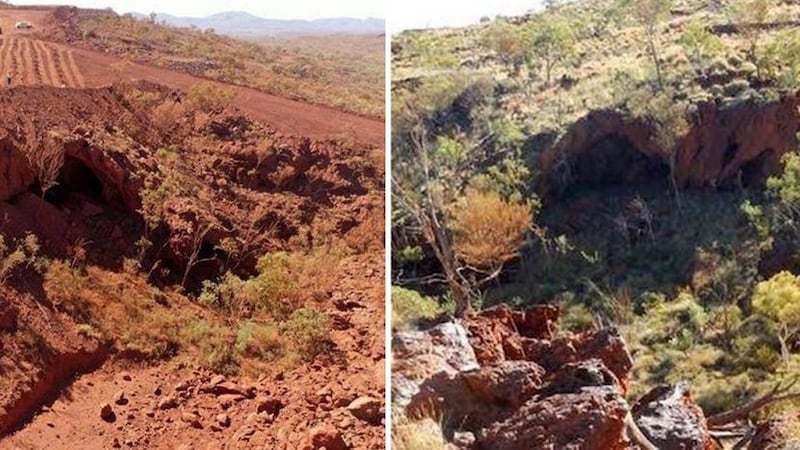Ancient Aboriginal heritage sites have been destroyed before the rock shelter’s full history could be uncovered, after mining company, Rio Tinto was granted legal permission to blast the more than 46,000-year-old site.
On Sunday, Rio Tinto blasted an area belonging to the Puutu Kunti Kurrama and Pinikura Traditional Owners at the Juukan Gorge, 60 kilometres north-west of Tom Price in Western Australia’s Pilbara region, as part of its mining operations.
Puutu Kunti Kurrama Land Committee Chair John Ashburton said Traditional Owners had only found out about the destroyed site on May 15 as TOs wanted to use the site during NAIDOC week.
“Our people are deeply troubled and saddened by the destruction of these rock shelters and are grieving the loss of connection to our ancestors as well as our land,” Mr Ashburton said in a statement.
In 2013, under the former Barnett government, Rio Tinto was granted authorisation under Section 18 of the Aboriginal Heritage Act (1972) to conduct excavation, destruction or damage to these Aboriginal sites.
However, since the approval in 2013 archaeological research has revealed highly significant ancient artefacts found in two rock shelters at the site, some of them dated back to 20,000 years before the last ice age.
Preliminary testing was conducted on the site in 2008 and salvage excavations were undertaken over the course of three trips in 2014.
Mr Ashburton said the 2014 excavations had uncovered artefacts of extreme importance, which put the area among the most significant research sites in the country.
“This is one of the earliest, if not the earliest, sites in the upland Pilbara and is part of a rich landscape of places in the area that have not been studied in-depth,” Mr Ashburton said in a statement.
“There are less than a handful of known Aboriginal sites in Australia that are as old as this one and we know from archaeological studies that it is one of the earliest occupied locations not only on the western Hamersley Plateau, but also in the Pilbara and nationally. Its importance cannot be underestimated,” he said.
During the 2014 excavation, several significant artefacts were uncovered, including grinding and pounding stones, a macropod fibula believed to be approximately 28,000 years old, and hair dating back 4000 years recovered from the excavations.
Under the state’s Aboriginal Heritage Act (1972) new information is not considered after section 18 notice is granted.
Puutu Kunti Kurrama and Pinikura Traditional Owners said they understand Rio Tinto acted within the law but they are frustrated by the inflexibility of the law.
The state’s Aboriginal Heritage Act is currently under review after the McGowan government announced a review in 2018. At the time of the review's announcement, the Aboriginal Affairs Minister Ben Wyatt called the act "out-of-date, inefficient and ineffective.”
The review process has been halted due to the coronavirus pandemic but the government has previously stated consultation on the newly drafted legislation will resume when restrictions are lifted.
A Rio Tinto spokesman said the company has been working with traditional owners for more than three decades and they have been working together in relation to the Juukan area over the past 17 years.
“Rio Tinto has worked constructively together with the PKKP (Puutu Kunti Kurrama and Pinikura) people on a range of heritage matters and has, where practicable, modified its operations to avoid heritage impacts and to protect places of cultural significance,” a statement said.
A native title agreement was signed with the traditional owners in 2011, four years before their native title claim received formal approved by the federal court.
By Rangi Hirini
Source: NITV News
27 MAY 2020 - 11:26 AM UPDATED YESTERDAY 11:26 AM

